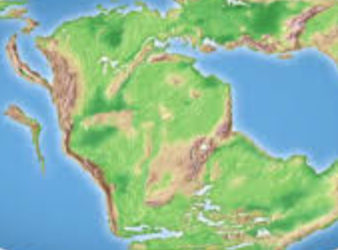I made this in February of 2015 moving out of a plan to superimpose a fractal pattern onto the Catskill Mountains and then see what was there.
In this case what I found (logging down to the seconds longitudes and latitudes) were the centers of 64 vortexes in the pattern–here, the Julia Set–and you don’t really find in fractal geometries the application of “sieve” except related to the Sierpinski Sieve (or Triangle or Gasket) which I guess the triangulated structures of which possess a sieve-like pattern. Yet the fractal pattern does have a sieve action in motion–though undercutting that’s that it’s all repeating, or self-similar, and nothing is new except an uncanny visual sense of wonder tied to some raw infinitude with just enough swerve.
The origination of the word “sieve” falls to various European languages that all point toward a specific tool, a sieve–which at the time must have been a real find–a thing that’s used to separate, more or less, “finer from the coarser parts of disintegrated matter by shaking it so as to force the former through meshes too small for the latter to pass”–like the camel through the eye of the needle, with the understanding that “needle” was a colloquialism for the slits in forts of ancient Israel narrow enough (very) to guard against attack, because groups were always attacking each other. Anyway, it was such a great discovery that it got it’s own word, with a lot of other words and attitudes attached to it. “Sieve” falls to things that spill out, a displacement, “sift,” like “shift,” which would appear to be its kin yet’s actually closer to “shed,” from the Old English “to divide,” which is a large part of what a sieve does. It has to do with winnowing, like in the expression the chaff from the wheat–yet not, as it must be “the wheat from the chaff” as it’s got a little algorithmic engine inside it. And “sieve” possesses a certain anomonopoetia to sounds of rubbing off, like snakes skins.
And of course “sieve” has the same sound shape as the contraction for “civilization,” as underwriting my interest in this project was and is an exploration of the possibilities of remapping the Catskills–or to impose another random order on its extant one–and see what happens, or the Catskill Sieve. In that sense the thing itself is a sieve, though I don’t ascribe to the superimposition of the course/fine dual-headed viper, though practically speaking it’s difficult to escape; rather nothing, just see what happens, with some feeling around it and things and people to bring to work together, at which (collaboration) I’ve never been very good yet feel a strong disposition to keep trying.
The sound track is from the Atlas Mountains of North Western Africa (or Morocco) with whom the Catskill Mountains were joined in Gowanadaland 180-million years back when our continents were one.

(Though really here am I working with the Bedouins or projecting at best or ripping off their rhyme? I don’t think the latter as I really dig it, and other sounds I heard when I was researching–and can deliver the sound I found of women gathering wood among these eerie sound caves–yet the body of the research is now digital trackless dust–and we have to keep going–so I don’t know where this sound originates really, except it’s from the Atlas Mountains and is part of each of us.
I got as far as this, coupled with the notion I would go to these 64 longitude-latitude axes (down to the second) and record what’s there to discover or add out ahead, combing the hills and backs of people’s lives for years mapping the mountains.

